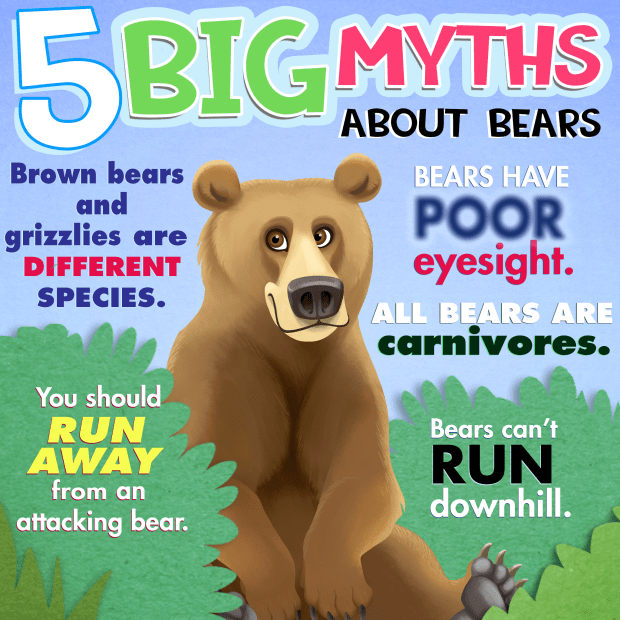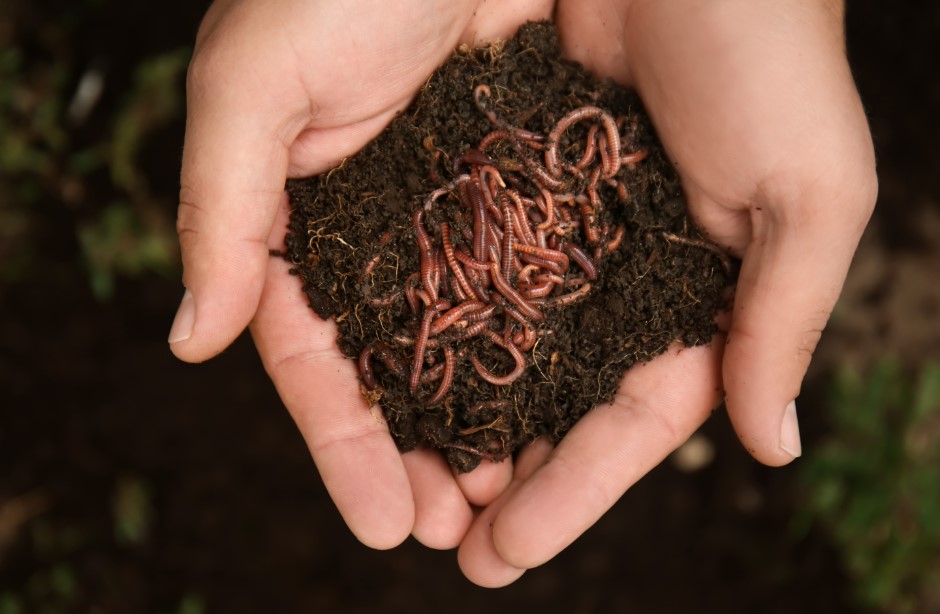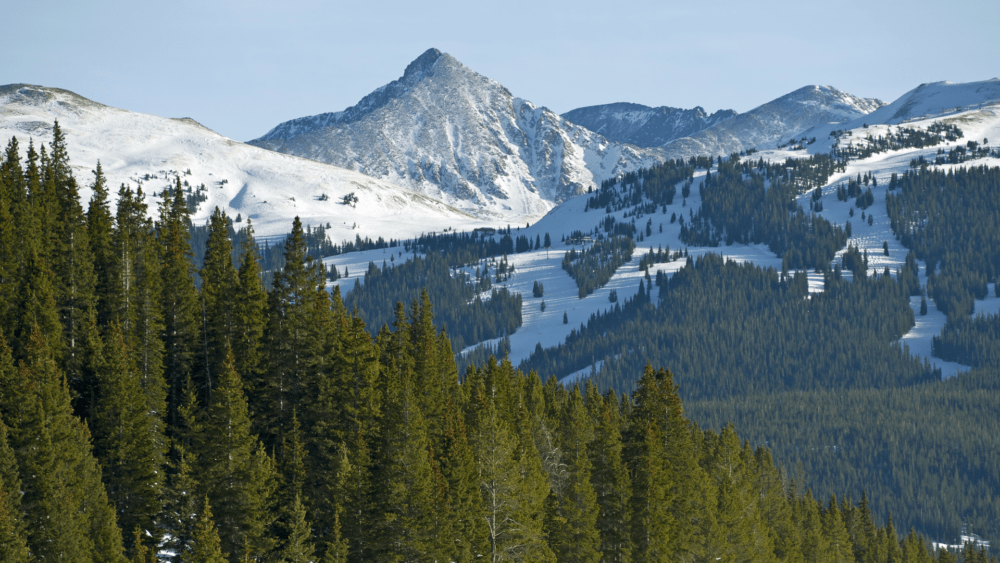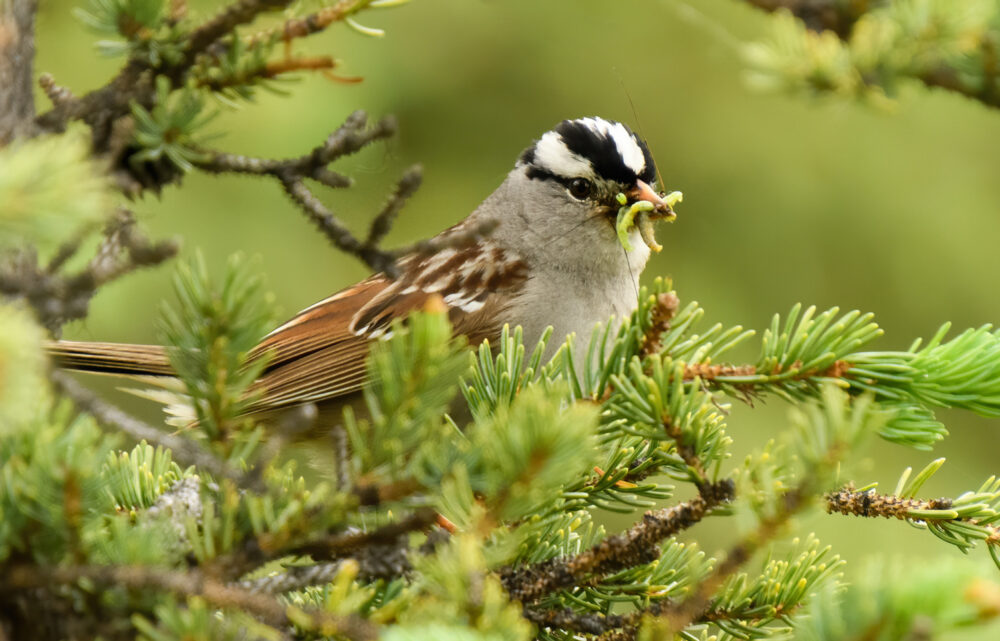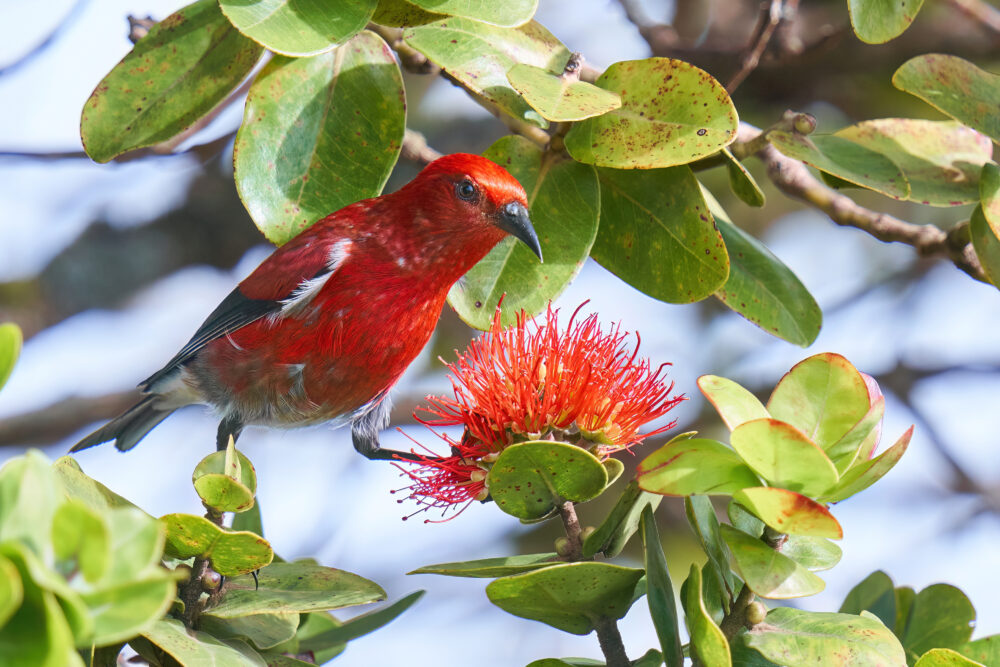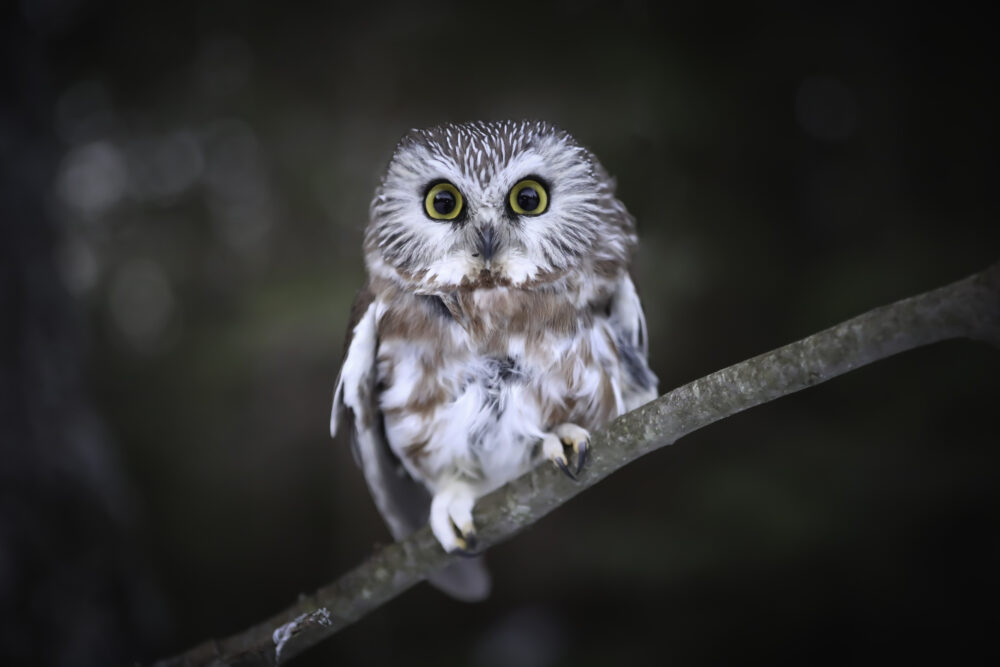We have much more to do and your continued support is needed now more than ever.
5 Myths About Bears
We’re celebrating all things bear this week with Ranger Rick’s Bear-a-Thon! We were shocked to discover that there wasn’t already a day or week devoted to all the different kinds of bears, so we instituted Ranger Rick’s Bear-a-Thon to correct that and pay homage to those furry, majestic creatures.
There are a lot of myths and misconceptions out there about bears, especially when it comes to what you should do if you ever encounter one in the wild. Read on to discover five popular myths about bears and why they are false.
1. Myth: Bears have poor eyesight.
Some people think that bears’ amazing sense of smell must make up for a lack of vision. In fact, bears’ eyesight is at least as good as humans’. They also have excellent night vision due to a reflective membrane on the back of their eye.
2. Myth: Bears are carnivores.
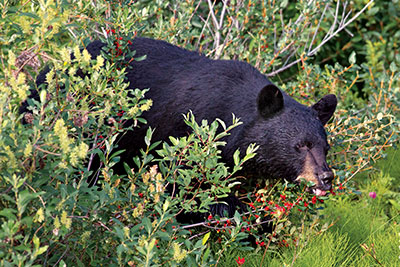
3. Myth: Bears can’t run downhill.
If you’re being chased by a bear, don’t run downhill! Bears can run as fast as a horse (35 mph), and they can do it uphill, downhill, and everything in between. A bear can outrun you no matter what, so if you see one in the wild do not try to run away from it. Instead, you should stand tall, wave your arms, and talk loudly but calmly. Back away slowly, but stop moving if the bear follows you.
4. Myth: Brown bears and grizzly bears are different species.
People used to think that there were many different species of brown bear because they can vary greatly in size and color. In fact, they are all the same species (Ursus arctos), with the grizzly bear being one subspecies (Ursus arctos horribilis). Many people in North America refer to the smaller, lighter-colored version of the brown bear as a “grizzly bear,” and call the larger, darker-colored version a “brown bear.” Again, they are the same species, but one is bigger because it lives where there is a lot of salmon to eat. The other is smaller because it eats mostly berries and roots and can’t grow as big on such a diet.
5. Myth: You should run away from an attacking bear.
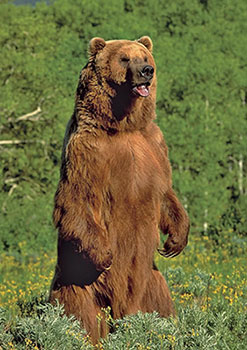
Of course, these myths only cover the “bear” necessities.
To become a true “grizz whiz,” you’ll have to download our new iPad app, Ranger Rick Jr. Appventures: Bears! The app is packed with fun bear-related activities and games, plus an interactive photo story that teaches kids all about bears. Download it today from the App Store!
And now that you’ve boned up on bears, test your bear knowledge with our Grizz Quiz! Find out if you are “beary” intelligent or if your head is stuffed with fluff, like Winnie the Pooh.

